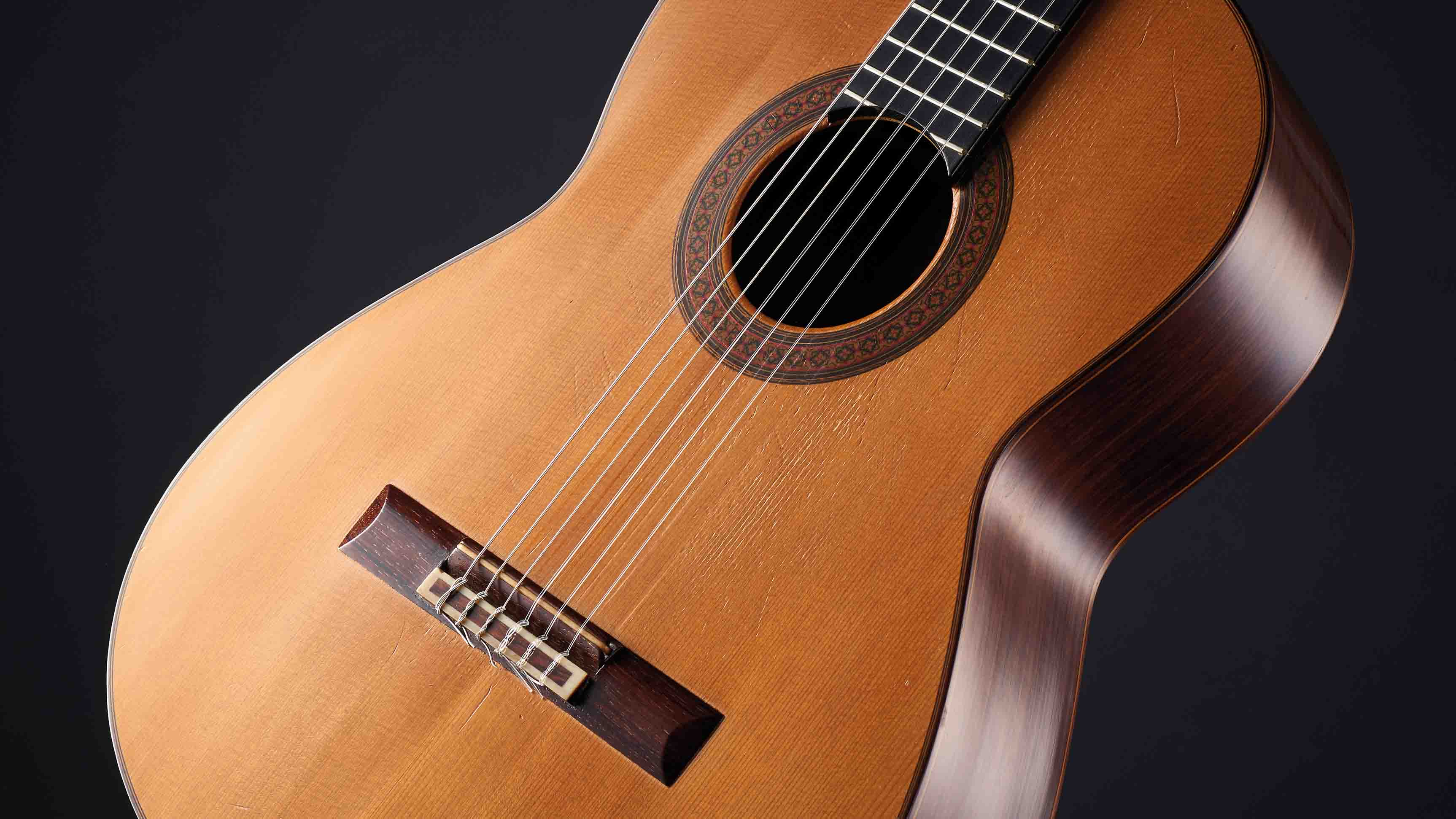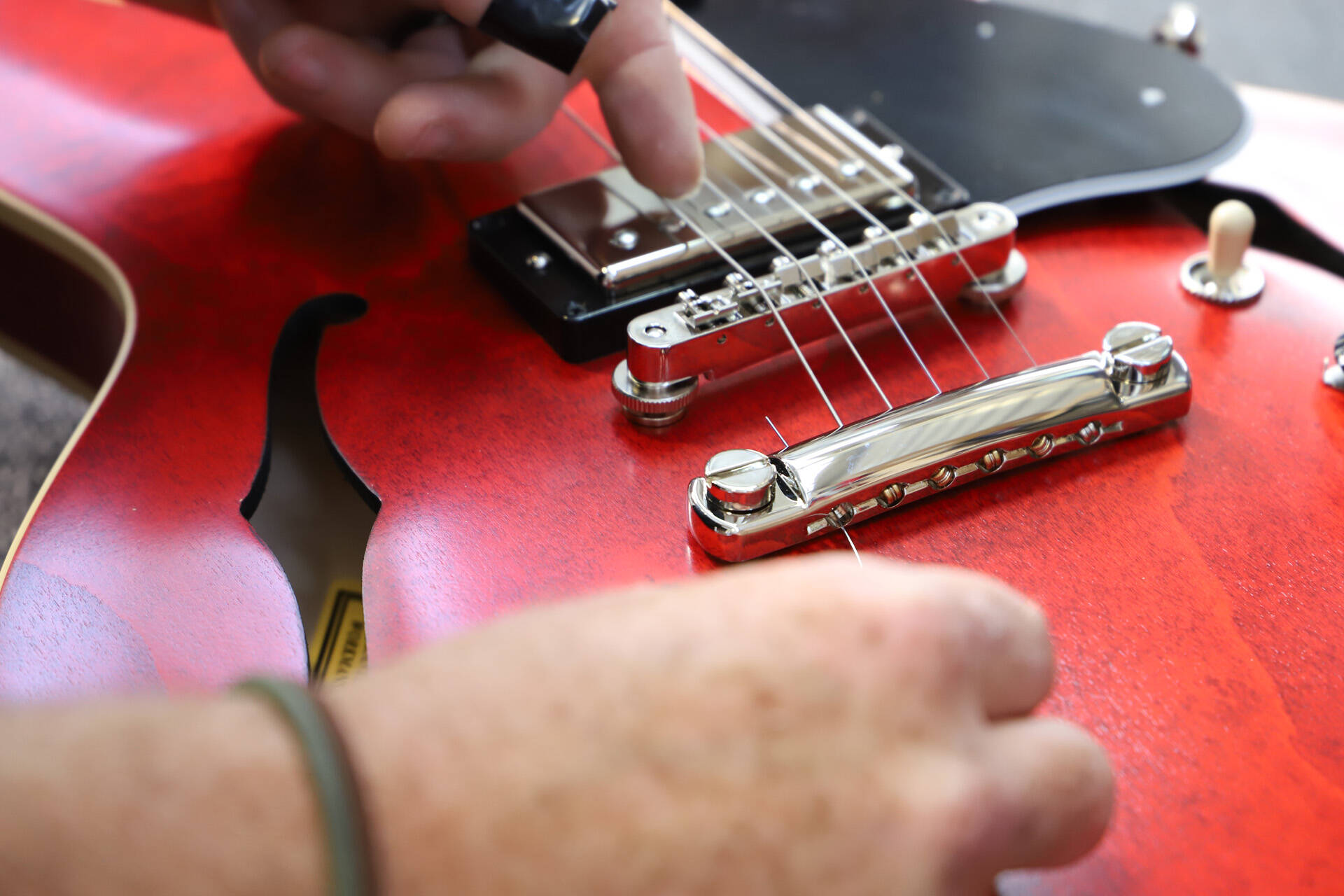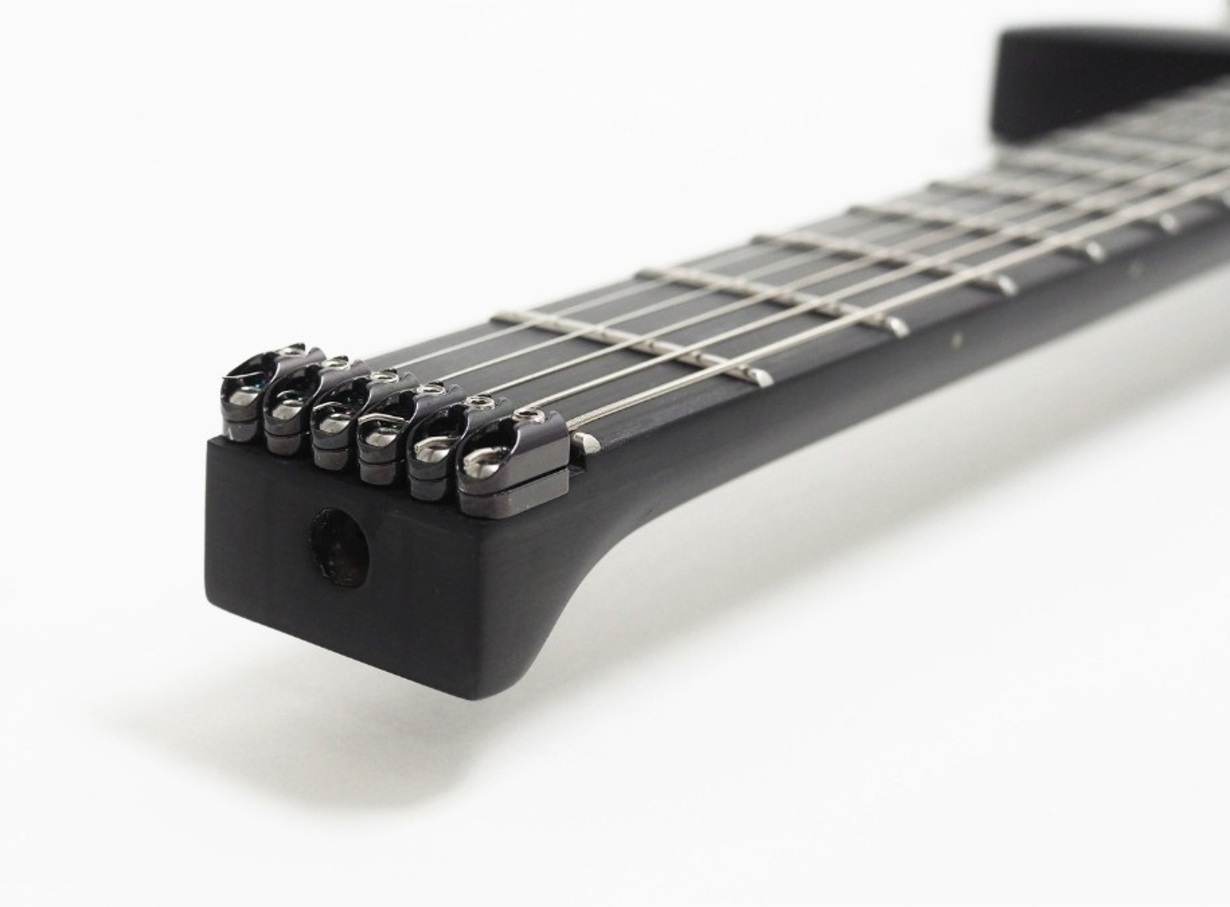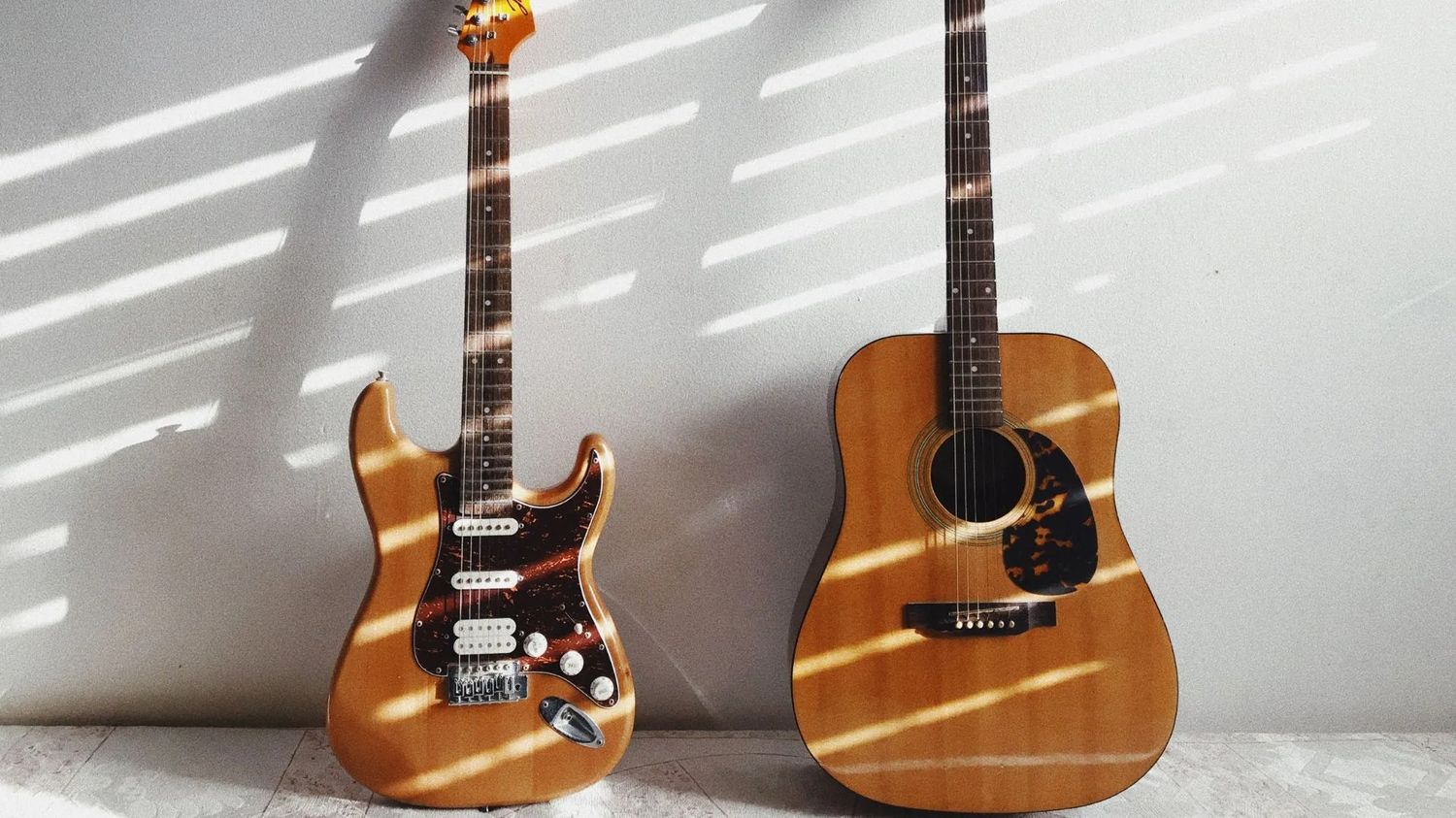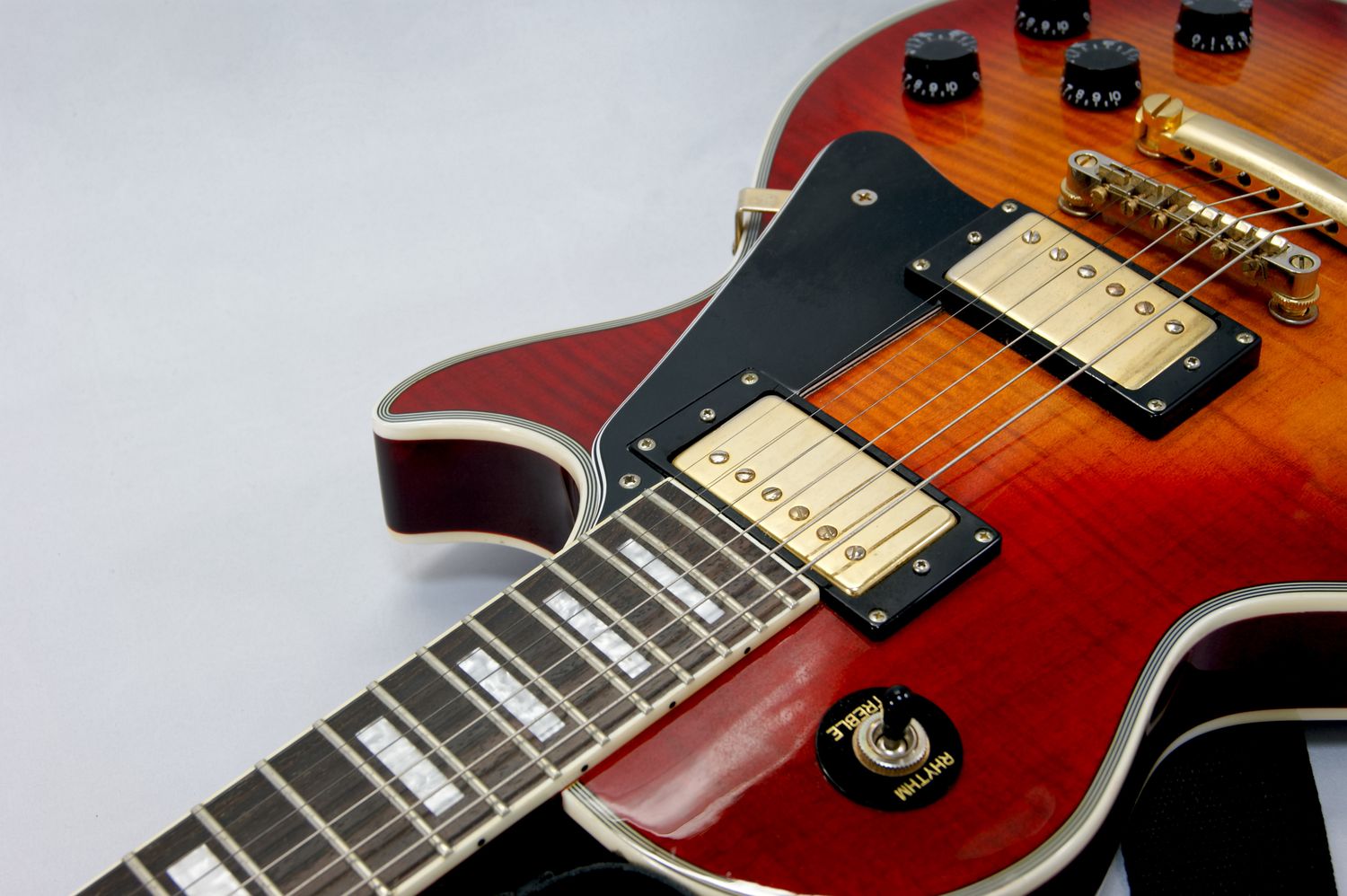Home>Instruments>Guitar>How To Tune An Electric Guitar
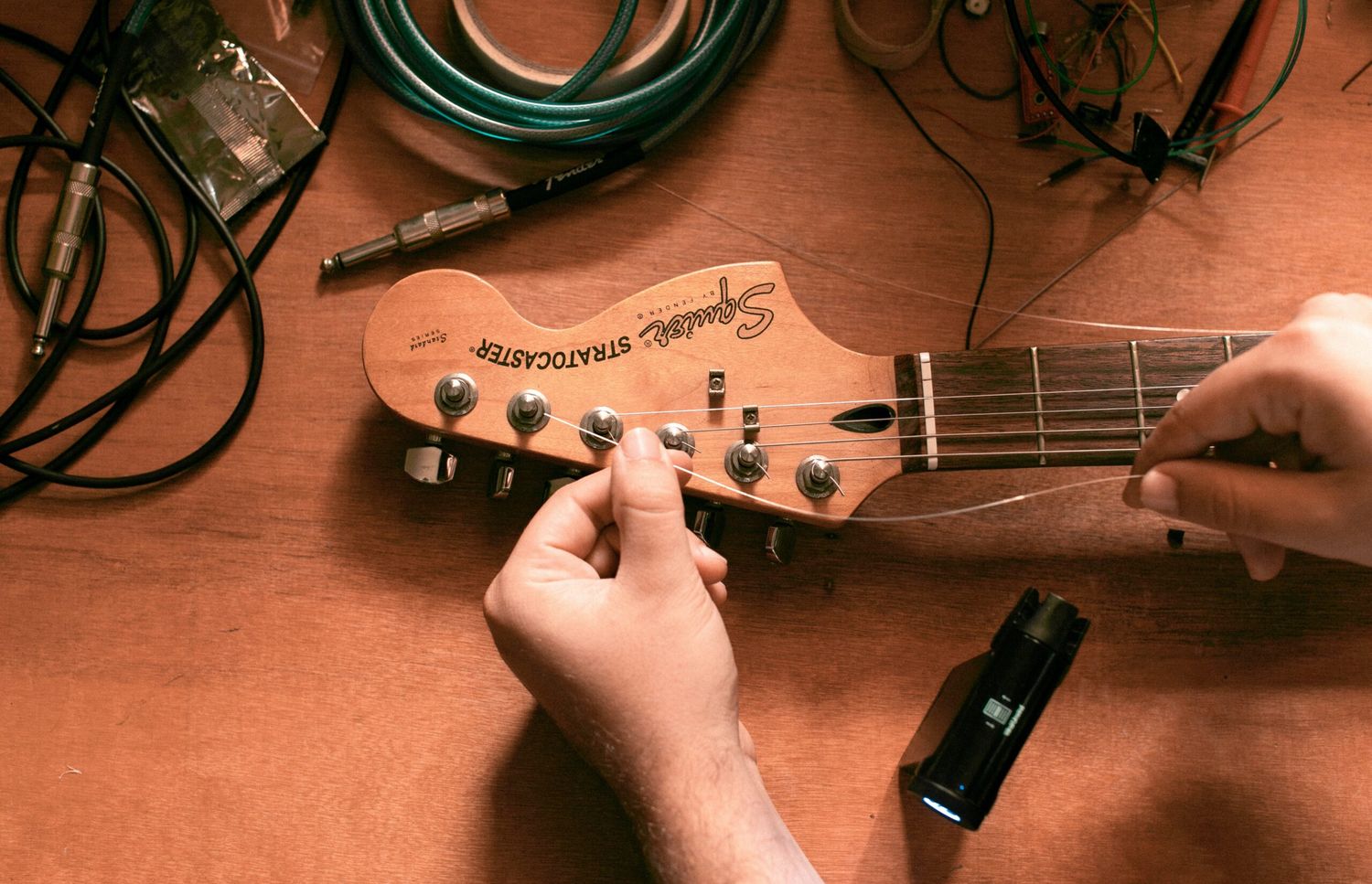

Guitar
How To Tune An Electric Guitar
Modified: February 15, 2024
Learn how to tune an electric guitar with our step-by-step guide. Keep your guitar sounding great and in tune with our expert tips.
(Many of the links in this article redirect to a specific reviewed product. Your purchase of these products through affiliate links helps to generate commission for AudioLover.com, at no extra cost. Learn more)
Table of Contents
Introduction
Playing the electric guitar is a thrilling experience that opens the door to a world of musical creativity. Whether you are a beginner or an experienced guitarist, one of the fundamental skills to master is tuning your instrument. A well-tuned guitar not only produces harmonious sounds but also enhances the overall playing experience. In this comprehensive guide, we will delve into the art of tuning an electric guitar, covering essential techniques, tools, and tips to help you achieve and maintain perfect tuning.
Tuning an electric guitar is a crucial aspect of playing, as it directly impacts the sound quality and playability of the instrument. It involves adjusting the tension of the strings to ensure they produce the correct pitch when played. While it may seem daunting at first, with the right knowledge and practice, tuning your electric guitar can become second nature, empowering you to explore various musical styles and express your creativity with confidence.
Whether you are gearing up for a live performance, a recording session, or simply a jam session with friends, having a well-tuned electric guitar is non-negotiable. It not only elevates the sonic output but also contributes to the longevity of your instrument. Understanding the nuances of guitar tuning and acquiring the necessary skills will not only enhance your musical journey but also deepen your connection with the instrument.
Throughout this guide, we will explore the intricacies of electric guitar tuning, from the basic principles to advanced techniques. By the end, you will be equipped with the knowledge and confidence to tune your electric guitar like a seasoned professional, ensuring that your musical endeavors are always in perfect harmony. So, let's embark on this tuning adventure and unlock the full potential of your electric guitar!
Understanding Guitar Tuning
Guitar tuning refers to the process of adjusting the pitch of each string to a specific note, typically following a standard tuning system. The standard tuning for a 6-string electric guitar, from the lowest-pitched string to the highest, is E-A-D-G-B-E. Each letter represents the pitch of the open string when played without pressing down any frets. Understanding the concept of standard tuning is essential for every guitarist, as it forms the foundation for playing chords, scales, and melodies.
It’s important to note that there are alternative tunings used by some guitarists to achieve unique sonic characteristics or to simplify playing certain musical pieces. These alternative tunings, such as drop D tuning or open G tuning, involve adjusting the strings to different pitches, expanding the sonic possibilities of the instrument. While standard tuning is the most common and versatile, exploring alternative tunings can add depth and diversity to your musical repertoire.
Furthermore, understanding the relationship between notes and strings is crucial in guitar tuning. Each fret on the guitar neck represents a semitone, which is the smallest interval in Western music. By pressing down a string against a fret, you effectively shorten its vibrating length, resulting in a higher pitch. This principle forms the basis of playing different notes and chords on the guitar, and it directly influences the tuning process.
Additionally, the concept of intonation plays a vital role in guitar tuning. Intonation refers to the accuracy of the instrument’s pitch along the entire length of the fretboard. Proper intonation ensures that each note played at any fret sounds in tune. Adjusting the intonation is typically done by altering the length of the strings using the guitar’s bridge saddles, a process that complements the standard tuning of the open strings.
By grasping the fundamentals of guitar tuning, including standard and alternative tunings, the relationship between notes and strings, and the significance of intonation, you will lay a solid groundwork for honing your tuning skills and maximizing the sonic potential of your electric guitar.
Tools Needed for Tuning
Before diving into the tuning process, it’s essential to gather the necessary tools to ensure a smooth and accurate tuning experience. Here are the primary tools you’ll need to effectively tune your electric guitar:
- Guitar Tuner: A reliable guitar tuner is the cornerstone of the tuning process. Tuners come in various forms, including clip-on tuners, pedal tuners, and smartphone apps. They detect the pitch of each string and indicate whether it’s tuned too low, too high, or in tune. Some tuners also provide visual displays or LED indicators to guide you through the tuning process.
- Guitar Picks: While not directly related to the tuning mechanism, having a selection of guitar picks on hand can be beneficial during the tuning process. Picks can help produce clearer and more consistent notes when plucking the strings, especially for beginners who are still refining their fingerpicking technique.
- Clean Cloth: Keeping a clean cloth nearby is useful for wiping down the strings and fretboard. Maintaining a clean surface not only enhances the longevity of your strings but also ensures accurate tuning by preventing dirt and grime from affecting the string vibrations.
- String Winder: If you anticipate needing to change strings as part of the tuning process, a string winder can expedite the task. This tool allows for quick and efficient winding and unwinding of the tuning machine heads, saving time and effort.
- Capo: While not essential for basic tuning, a capo can be a valuable accessory for experimenting with alternative tunings or adjusting the pitch of specific strings without manually retuning each string. It clamps onto the fretboard, effectively raising the pitch of the strings beyond the open tuning.
By ensuring that you have these tools readily available, you can streamline the tuning process and address any potential adjustments or maintenance tasks that may arise during the tuning session. With the right tools at your disposal, you’ll be well-equipped to achieve precise and consistent tuning results, setting the stage for an optimal playing experience.
Tuning Methods
When it comes to tuning an electric guitar, several methods can be employed to ensure that each string is accurately tuned to the desired pitch. Here are the primary tuning methods commonly used by guitarists:
- Electronic Tuners: Utilizing an electronic tuner is one of the most precise and efficient tuning methods. Whether it’s a dedicated guitar tuner, a pedal tuner, or a smartphone app, electronic tuners analyze the pitch of each string and provide real-time feedback on whether the string is tuned too low, too high, or in tune. This method is particularly advantageous for beginners, as it offers clear visual or audible cues to guide the tuning process.
- Relative Tuning: Relative tuning involves tuning the guitar strings relative to one another, rather than to a specific standard pitch. This method is often used in situations where an electronic tuner is not available, such as during impromptu jam sessions. By ensuring that the strings are in tune with each other, even if they are slightly off standard pitch, relative tuning allows for immediate adjustments to facilitate playing in a group setting.
- Harmonic Tuning: Harmonic tuning leverages the natural harmonics produced by lightly touching the strings at specific nodal points and plucking them to create bell-like tones. By comparing the harmonics of different strings, guitarists can fine-tune the pitch of each string to achieve precise tuning. While this method requires a good ear for discerning pitch differences, it can be a valuable skill for refining tuning without relying solely on electronic devices.
- By Ear: Tuning by ear, also known as manual tuning, involves using a reference pitch, such as a piano, tuning fork, or another tuned instrument, to adjust the strings of the guitar. This method requires a keen sense of pitch and can be challenging for beginners. However, developing the ability to tune by ear can enhance a guitarist’s musical ear and foster a deeper connection to the instrument.
Each tuning method has its own advantages and considerations, and guitarists often develop a preference based on their playing style, environment, and personal proficiency. Regardless of the chosen method, the ultimate goal is to achieve accurate and consistent tuning across all strings, laying the groundwork for an enjoyable and harmonious playing experience.
Tuning the Guitar
Tuning an electric guitar is a meticulous process that involves adjusting the tension of each string to produce the intended pitch. Whether you are using an electronic tuner, tuning by ear, or employing harmonic tuning techniques, the following steps provide a comprehensive guide to tuning your electric guitar:
- Prepare Your Workspace: Find a comfortable and well-lit space to tune your guitar. Ensure that the guitar is securely positioned, either by using a guitar stand or by resting it against your body while seated. This stability is crucial for making precise tuning adjustments.
- Choose Your Tuning Method: Select the tuning method that best suits your preference and proficiency. If using an electronic tuner, ensure that it is properly calibrated and ready for use. If tuning by ear, have a reference pitch available to guide the process.
- Tune Each String: Starting with the low E string (the thickest string), pluck the string and observe the tuner’s feedback. If using an electronic tuner, follow the on-screen prompts to adjust the tuning peg until the indicator aligns with the desired pitch. Repeat this process for each string, moving from the lowest-pitched string to the highest.
- Check for Consistency: Once all strings are individually tuned, play some basic chords and intervals to ensure that the guitar sounds harmonious across different frets and string combinations. This step helps identify any subtle tuning discrepancies that may affect overall playability.
- Adjust Intonation (If Necessary): If you notice that the guitar sounds slightly out of tune when playing higher up the fretboard, the instrument’s intonation may need adjustment. This involves altering the length of the strings using the bridge saddles to ensure accurate pitch representation along the entire fretboard.
- Retune as Needed: After making any intonation adjustments, revisit the tuning process to ensure that the strings maintain their correct pitch. Intonation adjustments can impact the overall tuning, so it’s important to fine-tune the strings once again to achieve optimal consistency.
By following these steps, you can effectively tune your electric guitar using the method of your choice, whether it’s with the aid of electronic tuners, by ear, or through harmonic tuning techniques. Consistent and accurate tuning not only enhances the sound quality of the instrument but also contributes to a seamless and enjoyable playing experience, allowing you to explore the full sonic potential of your electric guitar.
Tips for Maintaining Tuning
Once you’ve successfully tuned your electric guitar, it’s essential to employ strategies for maintaining optimal tuning stability, especially during extended playing sessions or when encountering environmental changes. Here are valuable tips for preserving the tuning of your electric guitar:
- Stretch New Strings: When installing new strings, they tend to stretch and settle into their tension over time. To expedite this process and minimize frequent retuning, gently stretch each string by pulling it away from the fretboard several times after installation. This helps preemptively address potential tuning instability.
- Secure String Windings: Ensure that the windings around the tuning machine posts are neat and secure. Properly winding the strings reduces slippage and maintains consistent tension, promoting stable tuning. Avoid excessive overlapping or loose windings, as they can lead to tuning issues.
- Lubricate Nut and Bridge Slots: Applying a small amount of graphite or specialized lubricant to the nut and bridge slots reduces friction on the strings, allowing them to return to their tuned position more reliably. This simple maintenance step can significantly enhance tuning stability, particularly during string bending and tremolo use.
- Monitor Temperature and Humidity: Fluctuations in temperature and humidity can impact the tension of guitar strings, potentially causing them to expand or contract. Store your electric guitar in a controlled environment to minimize these effects, and consider using a humidifier or dehumidifier as needed to maintain stable conditions.
- Regular Maintenance Checks: Periodically inspect the condition of your guitar’s tuning machines, ensuring that they operate smoothly and securely hold the strings in tune. Additionally, check for any signs of wear on the strings, as worn strings are more prone to tuning instability and intonation issues.
- Utilize Locking Tuning Systems (If Applicable): Some electric guitars feature locking tuners or tremolo systems that provide enhanced tuning stability by securing the strings at the tuning posts or bridge. Familiarize yourself with the specific features of your guitar’s tuning system and utilize them to optimize tuning retention.
By implementing these tips, you can proactively maintain the tuning stability of your electric guitar, minimizing the need for frequent adjustments and ensuring that your instrument consistently delivers the desired pitch accuracy and playability. Cultivating good tuning maintenance habits contributes to a seamless and enjoyable playing experience, allowing you to focus on expressing your musical creativity without the distraction of persistent tuning issues.
Conclusion
Mastering the art of tuning an electric guitar is a fundamental skill that empowers guitarists to unlock the full sonic potential of their instrument. Through a comprehensive understanding of guitar tuning, including standard and alternative tunings, the relationship between notes and strings, and the significance of intonation, guitarists can elevate their playing experience and musical expression.
Equipped with essential tools such as electronic tuners, guitar picks, and string winders, guitarists can confidently embark on the tuning process, employing methods such as electronic tuning, relative tuning, harmonic tuning, or tuning by ear to achieve precise pitch accuracy. By following a systematic approach to tuning, including preparing the workspace, tuning each string, and checking for consistency, guitarists can ensure that their electric guitar resonates with harmonious tones and optimal playability.
Furthermore, the implementation of maintenance strategies, such as stretching new strings, securing string windings, and monitoring environmental conditions, contributes to the long-term stability of the guitar’s tuning, minimizing the need for frequent adjustments and enhancing overall performance.
Ultimately, the ability to tune an electric guitar effectively is not only a technical skill but also a gateway to musical exploration and creativity. A well-tuned guitar serves as a reliable companion for musicians, enabling them to delve into diverse genres, experiment with alternative tunings, and express their unique musical voice with confidence.
By embracing the principles and practices outlined in this guide, guitarists can cultivate a harmonious relationship with their instrument, ensuring that their musical journey is characterized by consistent tuning, optimal playability, and the freedom to unleash their artistic vision through the captivating sounds of the electric guitar.




